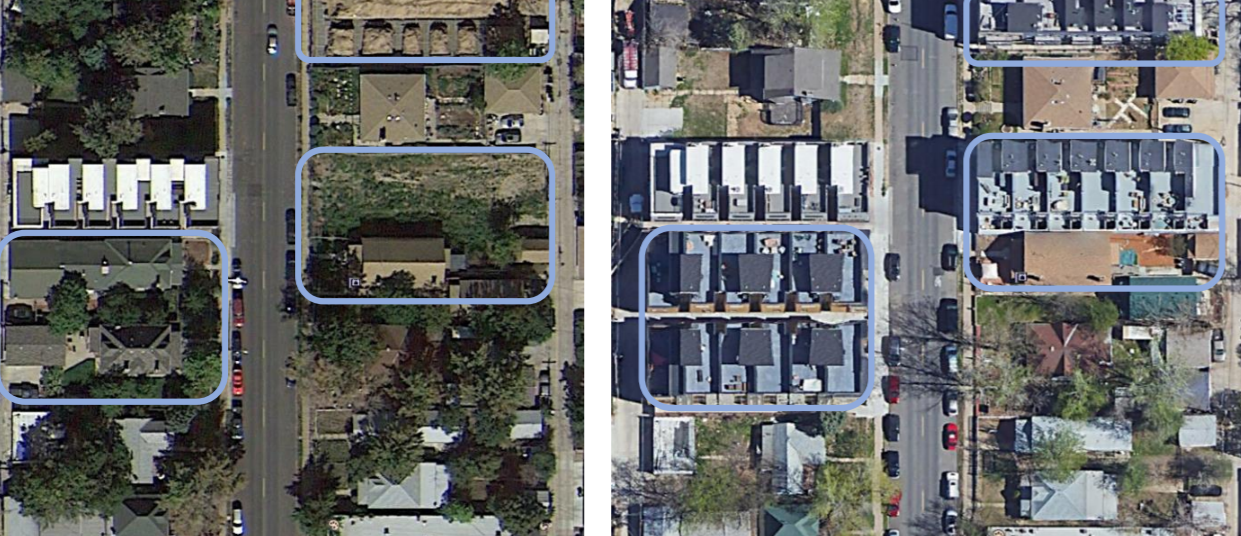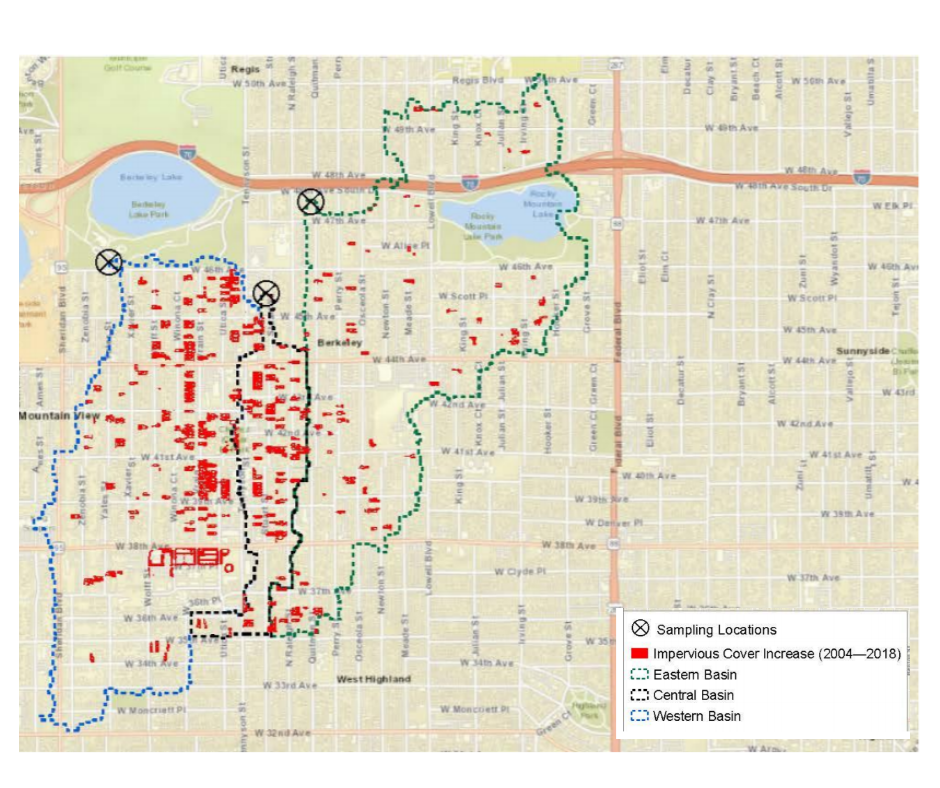Assessing the Effects of Your Residential Infill Development on Urban Stormwater Quality
Urban stormwater pollution is a concern worldwide due to its effects on the environment and human health. As cities grow in area and population, so does the amount of pollutants mobilized during storms and discharged into urban river systems where they can cause serious environmental problems. The quality of urban stormwater runoff—from streets, sidewalks, and commercial and residential structures—has been extensively studied around the globe. As more residential zones in U.S. cities are redeveloped to provide multi-family housing, efforts to survey the chemical composition of urban stormwater, an area of hydrological investigation that began decades ago, are also increasing.

Urban runoff monitoring in Denver began in 1968 and initially included stormwater quantity measurements to assist in flood forecasting. The city was one of the first 28 sites in the U.S. Environmental Protection Agency’s Urban Runoff Program study.
Denver, Colorado, was one of the original 28 sites in the U.S. Environmental Protection Agency’s (EPA’s) National Urban Runoff Program (NURP) study and one of the few large urban centers in EPA rain zone 9, making it a unique study area with a long record of urban runoff data. To evaluate stormwater quality in Denver, we conducted sampling over 18 months and considered 15 storms, collecting stormwater samples from three urban watersheds that have been undergoing rapid infill redevelopment, or redeveloping underutilized properties within an area to increase real estate values, for about a decade. The data collected will be pivotal for local stormwater managers’ decision making regarding revised stormwater control regulations for infill redevelopment and for assessing differences between historical city-wide monitoring data and the actual conditions on the ground in these changing neighborhoods.
Redevelopment Affecting Stormwater Quality in Denver
Contrary to popular belief, the relationship of stormwater quality to rainfall intensity is not linear, but rather more closely resembles a stepwise relationship with storm intensity and duration. Patterns of land use, the extent and interconnectedness of impervious surfaces, and the urban form can significantly influence contaminant build-up and wash-off in a city. Streets, parking lots, and driveways are the source of solids and many metals, while the galvanized material used in the roofs of commercial and industrial buildings is a source of zinc. These considerations are crucial when assessing urban stormwater quality and the impact of redevelopment.

Recent redevelopment has increased impervious coverage throughout Denver. For example, the pre-redevelopment photograph, on the left, is from 2014, and the post-redevelopment photograph of the same area, on the right, is from 2017.
The three small urban watersheds we sampled are all within the same larger watershed, but at different stages of infill redevelopment. Our aim was to evaluate the relationships between their characteristics related to infill redevelopment and the quality of their stormwater runoff. The three sites were known as the “West Basin,” the “Central Basin,” and the “East Basin.” Each sampling site was located at a manhole for easy access to the stormwater system during regular business hours without impeding traffic. The East Basin is relatively unchanged since the neighborhood was originally established. The Central Basin underwent extensive infill redevelopment between 2004 and 2018. The West Basin is considered an intermediate case because it has had significant infill redevelopment, but fewer changes in the south and west parts of the drainage area.

This map of delineated sampling basins in Denver shows where impervious coverage increased between 2004 and 2018.
Quantifying the Effects of Residential Infill Redevelopment on Stormwater
We analyzed discrete, time-weighted samples to determine how contaminant concentrations changed over the course of 15 storms. We also collected stormwater samples from the three study sites during from May 2018 through August 2019 and analyzed them for various constituents including nutrients, metals, fecal indicator bacteria (FIB), total suspended solids (TSS), and dissolved and total organic carbon.
We analyzed the first flush at each basin. This initial surface runoff from a rainstorm results in the “first flush‑ effect,” which is the discharge of high levels of pollutants from storm sewers to surface waters during the initial stages of storm runoff. The seven discretely analyzed storms did, in fact, show evidence of the ‑first flush effect for nutrients and TSS, but not for total dissolved solids (TDS), conductivity, pH, and FIB. Peak rainfall intensity and total rainfall depth also showed significant, but weak, correlations with some nutrients and metals.

Discretely analyzed storms showing evidence of the first-flush effect for phosphorous and ammonia at the Central Basin, evidence of the first-flush effect for TSS at the West Basin, and no evidence of the first-flush effect for TDS at the East Basin.
Another key analytical parameter was the event mean concentration (EMC). This flow-weighted average concentration of an entire rainfall runoff event indicates the reduction in pollutant concentration due to a given stormwater treatment. Although no significant differences in EMC values were found among the three basins, local-scale EMCs were higher than traditional city wide standards, particularly for some metals and nutrients. This was most likely because of the significantly greater imperviousness of the studied urban basins compared to the city averages. The significant difference between local EMCs and the established city-wide values indicates that city-wide EMC values are not rigorously applicable to smaller portions of a city experiencing noticeable land cover changes or infill redevelopment, which mainly occurs at the neighborhood scale.
Most important, this finding suggests that local-scale stormwater sampling provides a more accurate picture of non-point source pollution from urban areas than do currently used city‑wide EMC values. These insights show how locally focused stormwater monitoring can aid data-driven decision making by city planners where redevelopment occurs at local “neighborhood scales” and affects future management related to green infrastructure and water-quality regulations.
The entire results of our study are available in the paper “Quantifying the Effects of Residential Infill Redevelopment on Urban Stormwater Quality in Denver, Colorado,” published by the Journal of Water.

